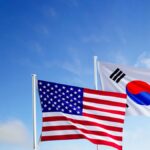Table of Contents
Since Myanmar’s military coup in February 2021, the country has descended into chaos. What started as a violent crackdown on protests has morphed into one of the most intense civil conflicts Southeast Asia has seen in decades. Over 500 armed groups, including long-standing ethnic armed organizations (EAOs), have joined the resistance against the junta, making the conflict a multifaceted and brutal civil war. Amid this turmoil, China has quietly yet increasingly inserted itself into the situation, not just as a neutral facilitator but as a powerful force shaping the conflict’s trajectory.
The latest milestone in this conflict came on October 27, 2023, when the Three Brotherhood Alliance—a coalition of the Arakan Army (AA), Myanmar National Democratic Alliance Army (MNDAA), and Ta’ang National Liberation Army (TNLA)—launched Operation 1027, delivering a significant blow to Myanmar’s military. In what was once thought to be impossible, the MNDAA and its allies captured the Northeastern Regional Military Command in Lashio, Northern Shan State, marking a major victory for the resistance forces.
However, this victory was short-lived. In a surprising turn of events, China, long viewed as a neutral player, intervened in the conflict. With its growing influence and strategic interests in Myanmar, Beijing pushed for a resolution that suited its priorities. In April 2025, after months of resisting, the MNDAA handed Lashio back to the junta, thanks in large part to China’s diplomatic pressure and economic leverage.

China’s Growing Role in Myanmar’s Conflict
China’s involvement in Myanmar is far from new. For years, Beijing has maintained a policy of non-interference, while focusing on protecting its economic investments and managing its southwestern border. However, since the military coup, China has shifted its stance, moving from behind-the-scenes facilitator to a more active and coercive participant in Myanmar’s political landscape.
Beijing’s primary concern has always been stability. It cannot afford to have a politically fragmented Myanmar, particularly with its Belt and Road Initiative (BRI) projects in the region and its investments in infrastructure projects, such as the China-Myanmar Economic Corridor. As the junta’s grip on power weakened, particularly after the success of Operation 1027, China decided that it was time to assert its influence more directly.
This shift marked a significant change in how Myanmar’s conflict was being mediated. Previously, China had acted as a neutral party, helping broker ceasefires and negotiations between the junta and various EAOs. But now, Beijing is taking a more assertive role, ensuring that no single group—whether the military junta or the resistance—gains too much power. This is a deliberate attempt to maintain Myanmar’s geopolitical status quo, allowing China to maximize its strategic interests.

The Limits of Myanmar’s Resistance
For Myanmar’s resistance forces, China’s growing influence presents a stark reality: there are limits to how far they can push in their fight against the junta. While the ultimate goal of many resistance groups has been the dismantling of the military junta, China’s intervention underscores that Beijing is not interested in seeing the resistance gain too much ground. Beijing’s primary concern is maintaining Myanmar’s territorial integrity and preventing a full-scale collapse of the state, both of which would destabilize the region.
In the wake of the handover of Lashio, the message from China is clear: Myanmar’s resistance forces can only achieve so much before Beijing steps in. This is not a matter of supporting one side over the other but of “ground balancing”—ensuring that Myanmar remains weak enough to be pliable to China’s influence but intact enough to serve its strategic interests.
For the resistance, this creates profound implications. While they remain committed to defeating the junta through armed struggle, China’s meddling complicates their objectives. The question now is whether the resistance can adapt to a new political reality where Chinese interests, rather than Myanmar’s sovereignty, dictate the course of negotiations.
China’s Conflict Termination Model
China’s approach to Myanmar’s civil war contrasts sharply with Western models of conflict resolution. While the international community has long pushed for ceasefire monitoring, peace talks, and institutional reforms, China has moved to create its own “conflict termination model” tailored to its strategic interests.
The recent handover of Lashio is a key example of China’s direct involvement in peace processes. By facilitating the return of the city to the junta, China has demonstrated its willingness to directly participate in ceasefire monitoring and conflict de-escalation. However, unlike Western models, China’s approach does not focus on achieving long-term political solutions, such as justice, equity, or democratic reforms. Instead, China’s primary interest is in managing the conflict in a way that serves its broader geopolitical goals, including protecting its economic investments and preventing instability in the region.
If China’s model proves successful, it could set a precedent for how future conflicts in Myanmar—and potentially other regions—are handled. While China may be able to reduce violence in the short term, its mediation efforts are unlikely to address the deeper structural issues that fuel the conflict, such as ethnic discrimination, political oppression, and the lack of democratic governance.
Geopolitical Stakes and Myanmar’s Future
The growing influence of China in Myanmar raises significant geopolitical concerns. As China asserts its control over Myanmar’s future, two potential trajectories emerge: one of geopolitical neglect, where the international community fails to engage meaningfully, allowing China to shape Myanmar’s future according to its interests; and one of geopolitical competition, where Myanmar becomes a battleground for influence between China and other global powers, potentially exacerbating the country’s instability.
In the case of neglect, China would be free to guide Myanmar’s post-conflict transition without significant opposition from the international community. This would allow Beijing to align Myanmar’s future with its strategic interests, securing access to resources and maintaining a stable geopolitical environment along its southwestern border. In this scenario, Myanmar would likely fall further into China’s sphere of influence, with limited regard for the aspirations of its people.
The alternative scenario, marked by geopolitical competition, could be even more dangerous for Myanmar. If the U.S., India, or other global powers attempt to counterbalance China’s influence, Myanmar could become a site for proxy wars and international destabilization, deepening the country’s fragility and prolonging its suffering.

Conclusion: The Future of Myanmar
As Myanmar’s civil conflict drags on, the country faces a future defined not by internal resolution but by external powers shaping its destiny. China’s increasing role in Myanmar’s political and military affairs is a game-changer, with profound implications for both the country and the broader region. The question remains: Will Myanmar chart its course to peace, or will it remain a pawn in the larger geopolitical struggle between China and the international community?
John Sydenham Furnivall once warned that Myanmar might eventually become a “province of China” after enduring prolonged anarchy. While this may seem like an extreme view, China’s growing influence in Myanmar’s political and territorial reconfiguration suggests that Furnivall’s words are becoming more relevant with each passing day.
Myanmar is at a crossroads. The future remains uncertain, but China’s increasing dominance in the region is unmistakable, raising questions about Myanmar’s sovereignty and the international community’s ability to safeguard its future.
Author Profile
- Syed Tahir Abbas is a Master's student at Southwest University, Chongqing, specializing in international relations and sustainable development. His research focuses on U.S.-China diplomacy, global geopolitics, and the role of education in shaping international policies. Syed has contributed to academic discussions on political dynamics, economic growth, and sustainable energy, aiming to offer fresh insights into global affairs.
Latest entries
 GeopoliticsAugust 23, 2025Previewing the White House Visit of South Korean President Lee Jae Myung
GeopoliticsAugust 23, 2025Previewing the White House Visit of South Korean President Lee Jae Myung Middle East ConflictJuly 22, 2025Israel’s Deadly Attacks on Gaza: A Dire Humanitarian Crisis and International Calls for a Truce
Middle East ConflictJuly 22, 2025Israel’s Deadly Attacks on Gaza: A Dire Humanitarian Crisis and International Calls for a Truce Middle East & North AfricaJuly 20, 2025Israel Targets Damascus Amid Rising Tensions in Syria
Middle East & North AfricaJuly 20, 2025Israel Targets Damascus Amid Rising Tensions in Syria Middle East AffairsJuly 14, 2025An Open Letter from Gaza’s University Presidents: Resisting Scholasticide Through Education
Middle East AffairsJuly 14, 2025An Open Letter from Gaza’s University Presidents: Resisting Scholasticide Through Education



3 comments
Your story truly touched me. I relate to it deeply, and your honesty gave me a fresh perspective. Thank you for sharing!
Your story touched my heart. I can completely relate to this topic , and it’s so refreshing to read something so honest and vulnerable. Your perspective has given me a new way to think about the topic. Thank you for sharing!
Another fantastic post! Your blog is becoming my go-to for inspiration. 😊